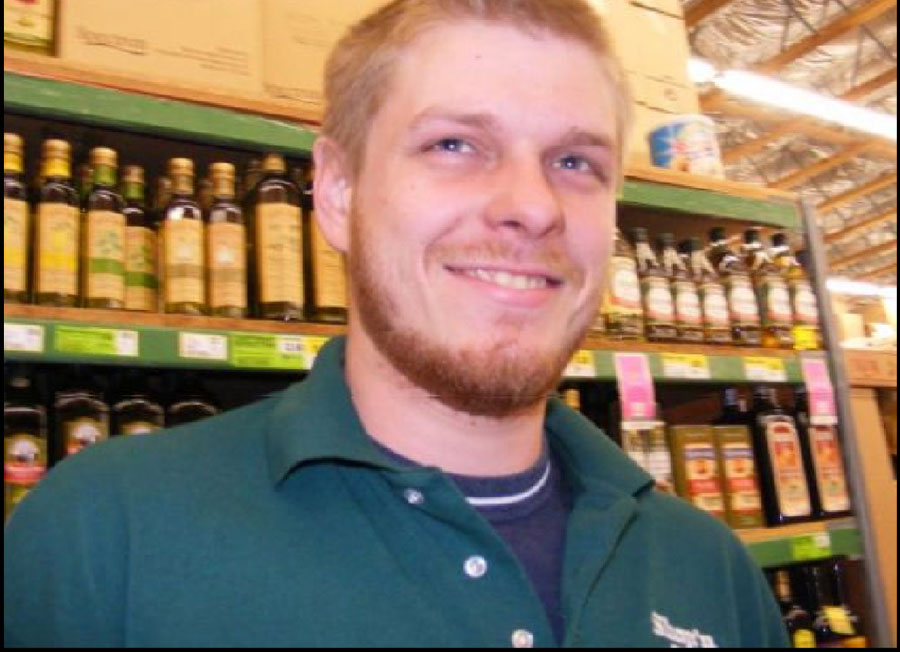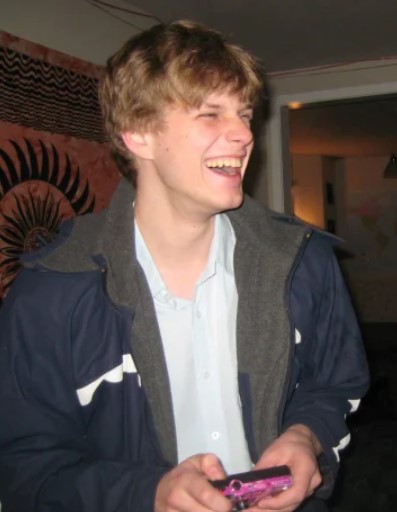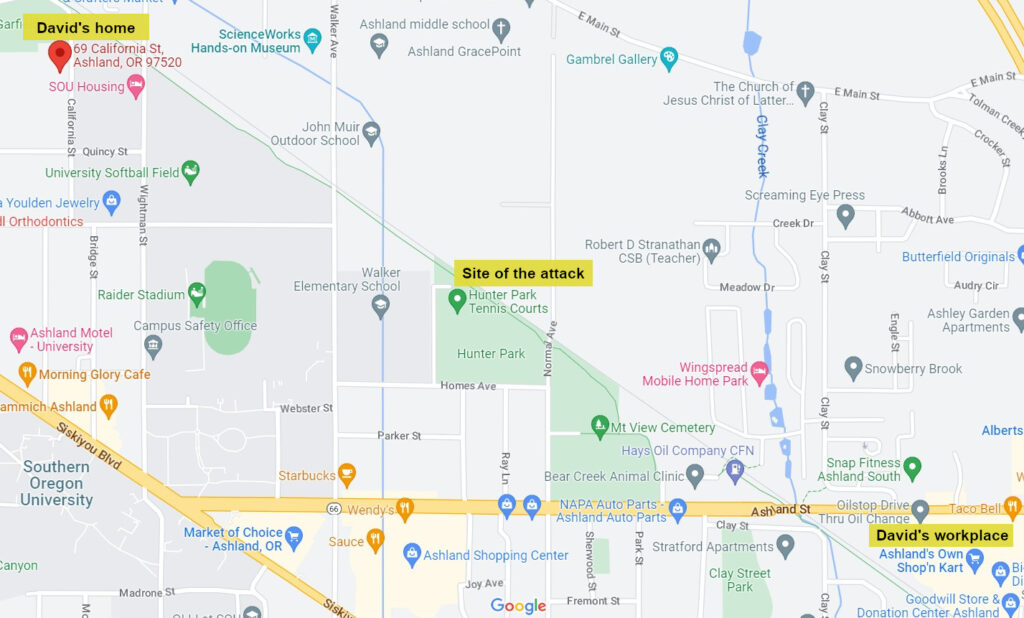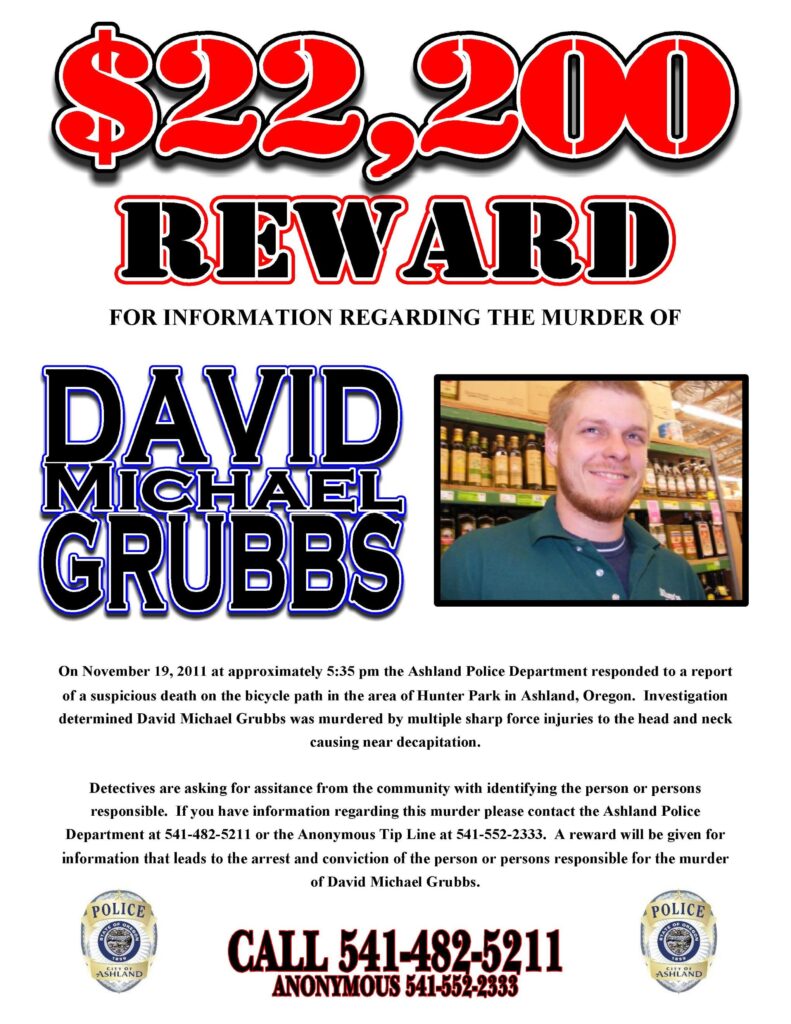When a young man is brutally murdered on his way home from work, investigators are left with more questions than answers, and a small Oregon town wonders: Who killed David?
Episode Media




Episode Sources
- David Grubbs Homicide – Police – City of Ashland, Oregon
- David Michael Grubbs Obituary
- Horrific murder shatters sense of safety in Ashland
- Family, friends remember murder victim
- In David’s name
- Police: Only lead in decapitation case is video game
- Police serve warrants regarding Grubbs murder case
- Connection Between Grubbs Search Warrants
- Talent hatchet one of many blades inspected during Grubbs investigation
- The hunt continues
- David Grubbs’ 26th Birthday to Benefit Ashland High School Music
- An Online Gaming Murder?
- Yreka officers apprehend man wanted for Ashland burglary
- Local Unsolved Mysteries: the David Grubbs murder
- APD names person of interest in David Grubbs murder case
- David Grubbs’ mother talks about person of interest in son’s murder case
- Convicted murderer a one-time ‘person of interest’ in Grubbs slaying
- Christian Delaurentiis, who put roommate’s dismembered body in freezer, ‘deserves no mercy,’ victim’s sister says
- Reward fund for information related to David Grubbs’ murder case has been extended
- 7 years later, brutal murder still unsolved
- Decapitation of young Ashland man remains unsolved 7 years later
- Murder still haunts Ashland
- New details emerge on killing of Ashland man 8 years after his death
- ‘What should we save?’ In flight from southern Oregon wildfire, mother preserves memory of murdered son
- Ten-years after unsolved Ashland murder, friends remember David Grubbs
- ‘Murders like this don’t happen often anywhere,’ 10 years later David Grubbs murder case still unsolved
- Community still looking for answers in violent 2011 murder of David Grubbs on Ashland, Oregon bike path
- Memorial to slain Ashland man vandalized
Episode Transcript
Welcome back to Bite-Sized Crime. This week’s case was recommended to me by a listener, and it took me on quite a journey as I dug into the research. Thank you to L. Rawlins for suggesting this case, and I want to remind all my listeners that you can recommend a case to me any time. There’s a link in the show notes that will take you directly to the submission form.
This week’s case is a story that is as baffling as it is horrifying, and I want to give a clear disclaimer up front: This episode includes graphic descriptions, so listener discretion is advised.
For this case, we’re traveling to the Pacific Northwest, to the small town of Ashland, Oregon. Just a few miles north of the California border, right along Interstate 5, Ashland is the home of Southern Oregon University and the Oregon Shakespeare Festival. Thousands of tourists visit Ashland each year to take in the thriving arts and music scene as well as the natural beauty of the Cascade Mountain Range.
In 2011, Ashland was the home of 23-year-old David Michael Grubbs. At 6 feet tall, David was an imposing figure in town, but he was described by all who knew him as gentle and kind, quick to laugh and always trying to bring a smile to those around him. David grew up in Ashland, and after attending Portland Community College, he returned to his hometown in 2009, where he worked the same job he had started in high school – stocking shelves at the Shop’n Kart Grocery. His boss, Eric Chaddock, said that David was, “the nicest kid I’ve ever met in my whole life.”
David was also a talented musician. As a teenager, he played the upright bass in the Ashland High School orchestra and was accepted into the Youth Symphony of Southern Oregon. He also had a passion for the electric bass guitar and loved playing music with friends. He had a tight-knit friend group – they all worked together at the Shop’n Kart and spent their spare time playing video games and meeting up at the local club to play pool.
Around 5pm on November 19, 2011, David had just finished up his shift at the Shop’n Kart and was headed home. The sun had just set, and the weather was cool and clear, so David took his usual route, walking along the Central Ashland Bike Path. It was only a mile and a half from the store to his apartment on California Street.
But David didn’t make it home that night.
At 5:35pm, a call came in to 911. A woman riding her bike down the path was flagged down by another cyclist. He had come across the unconscious form of a young man and needed someone to call for help. The woman told the dispatcher that the young man appeared to have been knocked out and needed medical attention. Emergency vehicles were immediately dispatched to the scene.
Listening on his police radio, Patrol Sergeant Tighe O’Meara heard the call for a “person down”. But something didn’t feel right, so he and his partner headed to the scene, hoping to lend their assistance. By the time they arrived, the paramedics had pronounced the young man dead at scene. They told Sergeant O’Meara that it appeared to be a gunshot wound, but when O’Meara turned his flashlight towards the body, he knew right away that this was no gunshot wound – it was a brutal attack. Deep gashes covered the man’s face and neck, and his head had been almost completely severed from his body. Even today, O’Meara says he has never seen anything that horrific in his entire career.
Crime scene investigators immediately began processing the scene. Right away they found the young man’s wallet, still in his pocket. His driver’s license identified him as David Michael Grubbs. He was less than a mile from home.
Investigators questioned the individuals who found David, but they didn’t really have any information to give. The woman said she had seen a man leaving the area, but she didn’t get a good look at him in the dark and couldn’t give a description.
The darkness would definitely prove to be an obstacle in the investigation. The bike path did not have any lighting other than what might have come from nearby homes and businesses. The spot where David was attacked was directly behind the Hunter Park tennis courts, which usually would have been well-lit, but it was closed on Saturdays, so the area was nearly pitch-black by the time investigators reached the scene.
The darkness would have also given the perpetrator an advantage before and after the attack. Although the bike path was well-traveled, it wouldn’t have been difficult for someone to ambush an unsuspecting victim, and it wouldn’t have been difficult to run off in the dark of night. There were plenty of places to hide.
As David’s body was sent to the medical examiner for autopsy, investigators began chasing down leads. David’s phone was handed over to the high-tech crimes division so that they could start downloading any data that might be useful, and detectives began interviewing everyone in David’s life, including his friends and co-workers at the Shop’n Kart. They also issued a press release asking the public to submit any surveillance footage from homes or businesses that may have shown David or his attacker on Saturday.
Naturally, tensions in Ashland were high, and rumors were rampant. Message boards were flooded with panicked comments from locals and tourists alike. In a town where people proudly left their doors unlocked, the news of David’s brutal murder was terrifying. The Ashland Police Department issued another statement, reassuring the public that Ashland was a safe place with a very low crime rate – be alert, but don’t panic.
On November 22, just three days after the attack, David’s autopsy results were released. According to the medical examiner, David’s cause of death was multiple sharp force injuries to the head and neck causing near decapitation. Investigators revealed that David didn’t appear to have any defensive wounds, indicating that his attacker may have come up behind him and taken him by surprise.
The weapon used in the attack was believed to be a very large, sharp-edged blade, possibly a sword or machete, or even a long knife. This stood out to investigators, so they started looking for similar cases in nearby jurisdictions. Police Chief Terry Holderness told reporters, “This community has very little crime of any type, especially violent crime. To have this type of thing happen anywhere is very rare. We are contacting most major police departments up and down the West Coast looking for similar situations and haven’t found any yet.”
Although this type of attack may be rare, apparently the weapons themselves are not. In the days after David’s murder, Ashland police received dozens of calls regarding people with swords and machetes. Sergeant O’Meara told Dateline, “Until this case came up, I was oblivious to how many people carry machetes and how many people carry swords… We were getting tips left and right and up and down and from every angle. It turns out an awful lot of people carry swords around for one reason or another.”
Of course, investigators followed up on each tip, confiscating a large amount of weapons in a short period of time. Unfortunately, none of them lead to David’s killer.
While investigators searched for answers, David’s family and friends were left to mourn the loss of someone they loved dearly. The Ashland community rallied behind them, raising over $10,000 to cover the costs for David’s funeral and establish a memorial fund in his name. The family released a statement, saying, “We are absolutely grateful and so thankful for what the community is doing… It’s amazing to see.”
On November 26th, hundreds of people gathered at the First United Methodist Church in Ashland to celebrate David’s life. They shared memories of David’s kindness and his ability to make others laugh. His sister Sarah said, “I’m sure he would make a joke if he was here right now.” David’s father thanked the community and the Ashland Police Department for their dedication to David’s case.
As the days and weeks passed, investigators continued to track down leads. In early December, Chief Holderness told reporters that they were considering every scenario, no matter how strange or unlikely. One scenario was that David’s murder may be connected to the online gaming community.
David was an avid gamer, and would often play online where he could communicate with other gamers around the world. Was it possible that one of them had it out for David and had been looking for revenge? It certainly wouldn’t be the first time an online feud had turned into real-life violence. Investigators issued a bulletin on the Ashland city website, asking for anyone who engaged with David online to reach out. Many gamers did, but they all said the same thing – David was a fair player who didn’t have any enemies.
Another obstacle to this theory was that David played on a game console, not a computer, making it much more difficult for anyone to connect his online persona with his real identity. It also made it nearly impossible for investigators to track down the users he played with. On the game console, his sessions weren’t recorded like they would have been on a computer, so in the end, the gaming theory didn’t go anywhere.
Investigators also looked into the theory that David’s attack was some sort of role play gone wrong. Ashland had a pretty active LARPing community – a group of people who would meet for Live Action Role Play. In this type of game, participants act out fictional scenarios, often wearing costumes and carrying realistic-looking props or weapons. Swords and machetes would not be out of the ordinary for a group like this. The LARPing community in Ashland regularly met in Lithia Park to practice with medieval swords – could one of them have taken their fictional role too far? Unfortunately, this theory didn’t lead anywhere either, and investigators were left to examine less fantastical scenarios.
Like many cities across the United States, Ashland has a large population of people experiencing homelessness. The bike path where David was attacked is part of the Bear Creek Greenway, which stretches 21 miles from Ashland to Central Point, and is a popular location for unhoused individuals to set up camp. Is it possible that someone attacked David and then skipped town? The Greenway is right on the railroad tracks and runs parallel to Interstate 5, which would make it easy to get away quickly.
Investigators did look into several unhoused individuals who were in the area at the time. They went so far as to name one of them a person of interest, a 43-year-old man with a history of mental illness who had previously tried to attack police officers with pruning shears. Police arrested the man at his girlfriend’s house for an unrelated burglary and discovered a three-foot sword in the home. However, Chief Holderness later announced that the sword was not the murder weapon and that the man had a solid alibi for the night of the attack. It was another dead end.
On December 5th, Ashland police announced that they were looking for three people who were seen on surveillance footage just before David’s body was discovered: a woman in a pink jacket walking a dog, and two individuals riding bicycles near the Mt View Cemetery. Investigators believed these individuals may have seen the perpetrator or may have information about the case.
The announcement brought in even more tips, and detectives followed up on each one. They talked to over 300 people and reviewed hundreds of hours of video footage from surveillance cameras. They also brought in a forensic anthropologist from Pennsylvania who specialized in sharp-force trauma to examine David’s wounds, and they were expecting DNA evidence to return from the state crime lab any day. It seemed as though the case may actually be moving forward.
But in the end, the DNA didn’t lead anywhere, and the forensic expert completed his analysis without any major bombshells. Ashland Mayor John Stromberg spoke about the case, saying, “We don’t know yet what the resolution will be. The resolution may be no resolution and living with uncertainty.”
And for the next year, that’s all there was – uncertainty. Investigators didn’t have any new leads, no suspects to arrest, no updates to give. David’s family and friends waited for answers.
In November of 2012, one year after David’s murder, the Ashland Police Department executed search warrants on several properties in the area: an apartment in the family housing complex at Southern Oregon University, a 2006 Jeep Wagon from that apartment building, and a rural property in the neighboring town of Talent. Divers sifted through murky soil at the bottom of an irrigation pond, and over 50 agents and volunteers searched barns and sheds, combing over every inch of the property.
Chief Holderness made it clear that they were not making any arrests. “Just because we have filed search warrants on a person’s property does not mean we are necessarily suspecting the residents themselves in any crime… It may just mean that someone was on their property or that their property is somehow connected. We don’t want to inconvenience any further those people who have otherwise been very cooperative.”
Investigators have never revealed exactly what, if anything, was found on those properties, but we do know that they have entered dozens of sharp blades into evidence over the years. In December of 2012, a man living along Wagner Creek just a half-mile downstream from the irrigation pond discovered a hand-made hatchet in the water behind his house. According to his interview with the Mail Tribune, the hatchet seemed to be crudely made from a saw blade. The man turned the hatchet over to the police right away, but again, we don’t know if anything ever came of it.
After that, the Ashland PD continued to look into any tips that came in, and they even brought in a retired detective to take a look at the case with fresh eyes, but after a while, every lead dried up and the case went cold.
Then, in 2015, the Ashland PD made an announcement: they had a person of interest, 32-year-old Christian Oliver Delaurentiis.
Delaurentiis was arrested in May of 2012 for the murder and dismemberment of his roommate, Phillip Lindemuth. Delaurentiis and Lindemuth were partners in crime, robbing multiple banks along the I-5 corridor. According to court documents, Lindemuth threatened to turn Delaurentiis into the authorities, so Delaurentiis stabbed him with a Bowie knife and dismembered his body, which he put in a freezer in the garage. A family member eventually turned him in, and he pleaded guilty to aggravated murder and first-degree abuse of corpse. He received a life sentence with the possibility of parole after 41 years, to be served concurrently with his 25-year sentence for bank robbery.
But six months before Delaurentiis was arrested for murder, he was in Ashland, Oregon. In November of 2011, he was living in the area, stealing to feed his heroin addiction. Sergeant O’Meara, recently promoted to Deputy Police Chief, told NBC5 that they had several people on their radar in David’s case, but Delaurentiis was the first one to be named an official person of interest. “He clearly is capable of very violent behavior… He was here. He murdered his roommate in Aloha, dismembered the body. He has to be considered a viable candidate for having done this.”
But despite his confidence, O’Meara didn’t have enough evidence to name Delaurentiis a suspect or move forward with charges. He didn’t even have enough to question him. O’Meara told Dateline, “We’re just kind of stuck, because he won’t talk to us and people don’t have to talk to the police.”
It’s been 11 years since David Grubbs was brutally murdered, but the Ashland community has not forgotten him. A cross marks the location where his body was found, and his friends and family members visit regularly, leaving notes and trinkets to remember him. A group of them even got matching tattoos in his memory.
investigators are still searching for answers. O’Meara, now the police chief in Ashland, is determined to keep the case alive. “Somebody out there knows something. And I have to imagine that… carrying around the burden of knowing who’s responsible for such a grotesque attack on David – and by way of David, his family and the entire community – that’s got to be a lot of pressure and a lot of stress to carry around… I am hopeful that at some point, somebody gets tired of it and that they pick up the phone…”
There is currently a $22,00 reward for information leading to the arrest and conviction of the person responsible for David Grubbs’ murder. If you have any information about this case, please contact the Ashland Police Department at 541-552-2333 or send an email to tipline@ashland.or.us.
